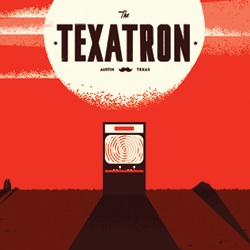WAVE OF DEDICATION: ONE WEEK IN WITH NGMOCO/ROUGH COOKIE’S STAR DEFENSE
As followers of the Twitter account and my semi-exasperated Facebook friends will already be well aware, I’ve spent the better part of the week taking part in a cross-blog challenge with ngmoco and developer Rough Cookie‘s upcoming tower defense game Star Defense.
The task was one of simple survival: we were given an early build of the game with a single planet and asked to last as many rounds as we could, which, in my case, started in the low 20s and built to a bedtime-last-night high of 49, which, it turns out, fell far less than half short of PocketGamer Tracy Erickson‘s minorly-staggering winning 132 rounds.
But, public embarrassment aside (I blame my lightly smashed-up screen [which I’m holding out on fixing/replacing until June’s alleged 3.0 model (you’d really better not hold out on me, Apple)]), what the challenge has done is both familiarize me with Star‘s setup, and, I have to admit, almost entirely win me over.
Like Tom mentioned earlier in talking about Plants Vs. Zombies, I’m not the most fanatical tower defense player: I wasn’t one of the forward-thinkers who called Desktop Tower Defense their top game of 2007 (c’mon, it was a dead heat between Phase, Earth Defense Force 2017, and Raw Danger), and the last TD game that really grabbed my attention at all (PvZ aside) was Studio Eres’ gorgeously abstract Immortal Defense — watch its demo trailer and the appeal is clear.
That’s nothing against the Fieldrunners and the Elemental Monster TDs, per se, it’s more about the heart of the mechanics themselves, which derive a large part of their underlying tension from the essential ‘waiting game’ of setting your positions and sitting idly by to see the effect they’ll have, and finding out 10 or 15 waves later that you’d been thinking wrong since the beginning. I’m not a fan of lost time.
And that’s something that Star Defense — or rather, the one level I’ve played — seems to have minimized. I’ve completely forgotten now where I’ve heard this, but Nokia designer Scott Foe — the main man behind the N-gage’s excellent flagship mobile/PC crossover game Reset Generation — said somewhere that one of the ways they’d got past the inescapable lag inherent in a multiplayer game running over slow mobile networks was to design the playfield to be larger than the mobile screen itself, which they then ported directly to the PC, even though a standard monitor could have easily displayed it whole.
The reason? In that 7+ seconds between every player’s turn, users would constantly scroll around the playfield looking for their next move and exploitable opportunity, which meant zero seconds of staring at a static screen.
So, here’s another mea culpa: all the times I’d expressed some skepticism about Star Defense‘s spherical — and thus 70% obscured at any moment — playfields, it turns out I was thinking wrong here, too, and one of the game’s strengths is that once you’ve placed your initial barriers that can ably destroy any earlier weaker waves, you’re then completely free to scout out the rest of the planet for deeper strategies.
Add to that a button that — and maybe I’ve just overlooked this in every other TD game? — forgoes the auto-timer and immediately sends out the next wave of enemies, and Star Defense is the first game of its type I’ve played that actively avoids any of that dead time that’s got under my skin, and one in which I’m never not directly interacting with its world [as a side note, this is something Plants Vs. Zombies does very smartly, too, by requiring you to click on randomly popped up bits of sunshine].
Star Defense should be landing on the App Store quite soon, and, with some several hours already happily put into Groundhog Day repeating just 1/7th of its galaxy, could easily be the game that has finally taught me to stop worrying and love the tower.
Star Defense [ngmoco, Rough Cookie]
See more posts about: Offworld Originals






